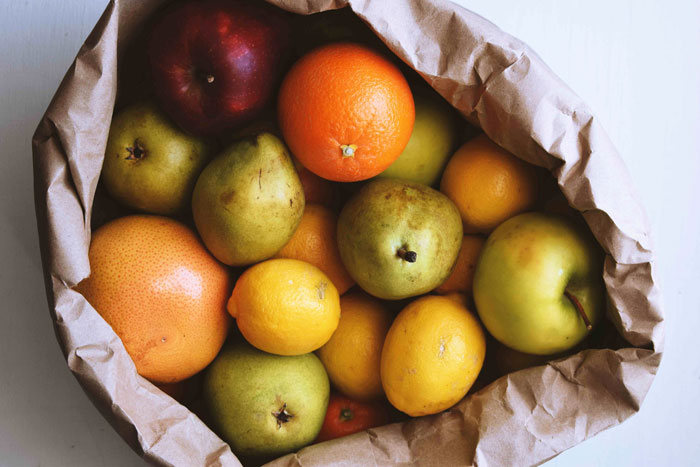 Feature Image by Kristina Tripkovic
Feature Image by Kristina Tripkovic
Tired of spending your hard-earned money on groceries only for them to get moldy before you have the chance to eat them? Yeah, same.
Below, dieticians share six tips and tricks for extending the shelf life of some of your favorite foods.
Keep produce dry
“Keeping produce dry is critical when it comes to preservation,” says registered dietician Angela Carullo. That’s because mold requires moisture to grow, so minimizing wetness when cleaning produce is the key to longer shelf life. “When it comes to delicate fruits and veggies that can be difficult to dry thoroughly (think berries, grapes, or lettuce), it’s best to wash them right before you consume them,” Carullo says.
Buy under-ripe fruits and veggies if you don’t plan on eating them immediately
“Think about when you will be eating the produce before you buy it,” suggests registered clinical nutritionist Gabriela Peacock. “If it’s two or three days away, get something that looks a little under-ripe, so that by the time you eat it, it [won’t be moldy].”
Expose your avocado seed
“Avocados can last two to three weeks,” says registered dietician Lorraine Kearney. The trick is to to create a slice that exposes the seed just a tad. “Use a sharp knife to create about an inch-wide wedge, make two lengthwise cuts from top to bottom (about an inch apart at the middle), then peel out the wedge,” instructs Kearney. “This will help to prevent the avocado from oxidizing.” If you want to extend the shelf life of an avocado even further, “Place a damp paper towel around it and store it to an airtight container,” says Kearney.
Know which products should stay at room temperature
“Storing groceries in the refrigerator may seem like the best way to extend their life, but not all foods thrive in cold storage,” says Carullo. “Garlic, onion, potatoes (white and sweet), pumpkin, rutabaga, and stone fruits, for example, can all be stored at room temperature in a cool, dark, dry spot. When stored properly, they can stay fresh for weeks – or even months – sans refrigeration.”
Don’t overfill your fridge
When it comes to keeping food fresh, the last thing you want to do is cut off circulation. “Don’t cram produce into the veggie drawer – you want a good air flow, which will help keep your produce fresher,” says Peacock. “Additionally, keep bananas, apples, pears, peaches, and kiwis separate from each other and away from other fruit and veggies, as they can cause the others to ripen and mold faster,” she adds.
Growing your own herbs
“Fresh herbs are super expensive and recipes often only call for a few sprigs,” Carullo explains. “The result? An enormous bunch of cilantro that’s bound to spoil before you can use it all up.” Instead of tossing the excess or throwing it in the freezer, she recommends investing in a small herb plant. “Not only do rosemary, parsley, or cilantro look nice in the kitchen, but a few fresh sprigs can be used weekly with zero waste,” she says.
xx, The FabFitFun Team
Do all these tips make you wonder what other mistakes you could be making? Here’s what you could be doing wrong when shopping at Whole Foods.




